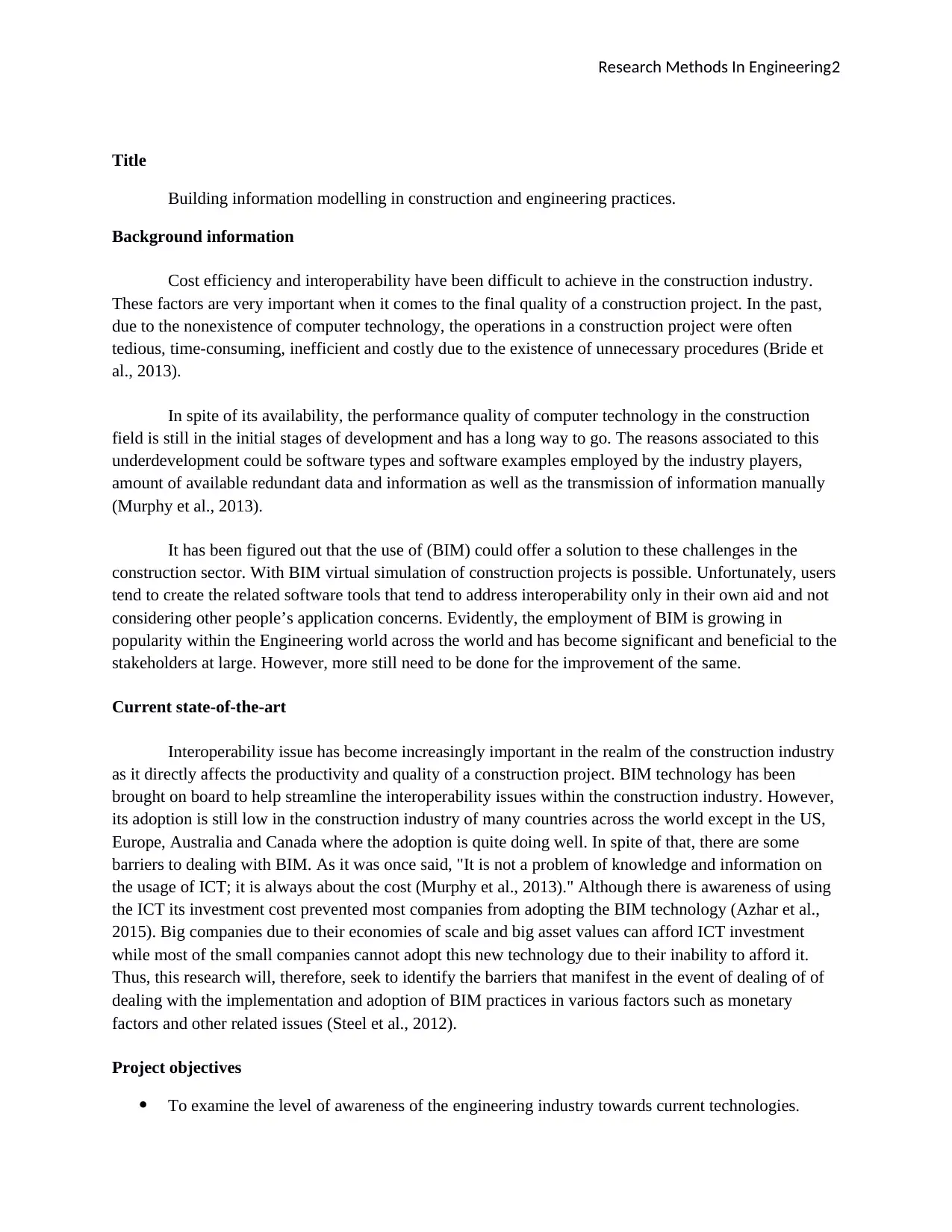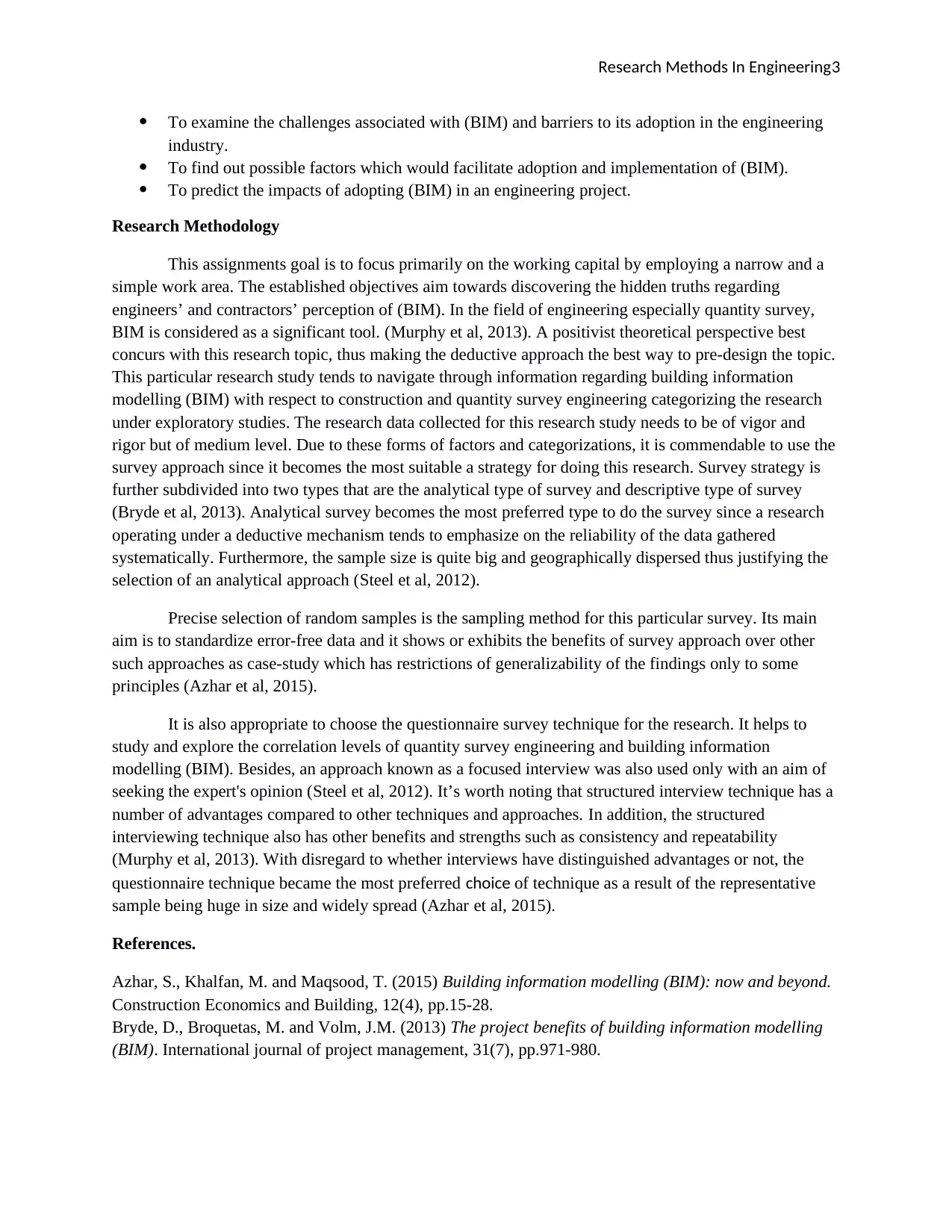BIM in Construction: Research on Implementation and Engineering
VerifiedAdded on 2023/06/15
|4
|1233
|380
Report
AI Summary
This research report investigates the application of Building Information Modeling (BIM) in construction and engineering practices, addressing the challenges of cost efficiency and interoperability. It highlights the limitations of traditional construction processes and the potential of BIM to offer solutions through virtual simulation. The report examines the current state of BIM adoption, noting its uneven implementation across different regions and the barriers, such as high investment costs, that hinder its widespread use, particularly among smaller companies. The project objectives include assessing the industry's awareness of current technologies, identifying challenges and barriers to BIM adoption, determining factors that facilitate its implementation, and predicting the impacts of BIM adoption on engineering projects. Employing a positivist theoretical perspective and a deductive approach, the research uses a survey strategy with an analytical survey type, focusing on a large and geographically dispersed sample. The questionnaire survey technique is chosen for its ability to study the correlation between quantity survey engineering and BIM, supplemented by focused interviews with experts to gather opinions and ensure data consistency.
1 out of 4











![[object Object]](/_next/static/media/star-bottom.7253800d.svg)